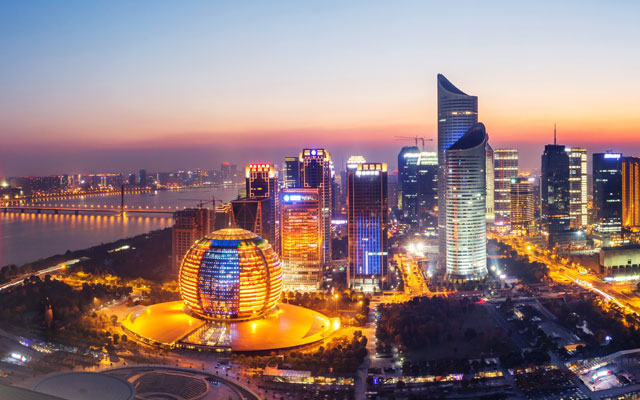China’s pro-trade Belt and Road Initiative has resulted in more overseas activities undertaken by Chinese trade associations, as well as the arrival of more global meetings on China’s shores
China’s Belt and Road Initiative (BRI), launched in 2013, has led to an increase in Chinese domestic association activity with their overseas counterparts, boosted business to Chinese cities and spurred second- and third-tier Chinese cities to “aggressively” tap international association meetings.

These positive trends were highlighted by two leading PCO chiefs in China, who also told TTGassociations that BRI was driving outbound travel among Chinese association members in industries such as AI, automotive, banking, healthcare, new technology and transportation.
Chinese associations are using the opportunity created by BRI to raise their brand profile and recruit new members, they observed, while city branding was helping to attract investments, increase industrial activity and grow GDP.
Cities like Hangzhou, Suzhou and Sanya, which are enjoying strong local government support, are hungry for international association meetings, according to Vivian Zhang, director of MCI China’s PCO business.
“Traditional tourism destinations like Qingdao and Xi’an are also stepping up efforts to tap (business events), including association meetings,” Zhang said, and MCI’s inbound business is expected to increase rapidly with the company’s high-level involvement in advising US bodies like Chicago-based PCMA on how to organise association meetings in China.
Alicia Yao, general manager, IME Consulting, commented that BRI was contributing to improved cross-cultural understanding, two-way knowledge exchange and two-way travel.
Yao, who is also vice president of China Business Event Federation, continued: “As a result of BRI, we are seeing more site inspections (along the trade zone), which in turn have led to the setting up of more meetings and forums to exchange ideas, and investments are being committed to organise tradeshows.”
She named the Chambers of Commerce in Hangzhou and Xiamen as examples of entities that are stepping up their level of activity.
Yao noted: “At the national level, many Chinese associations are setting up international relations departments to handle international association meetings.”
Meanwhile, international association meetings coming to China because of BRI include the International Gas Union (IGU).
Rodney Cox, events director, said IGU would be hosting its largest event in Beijing come 2024 with an expected turnout of 12,000 delegates.
Cox also shared that the association is appointing not only its first Chinese president, but also the first woman to helm the organisation for the 2021 to 2024 term.
Li Yalan, vice chairman, Beijing Gas Group and one of four China members of the union, will be appointed vice-president at its Washington DC event this year and will assume the presidency in three years’ time.
Cox added BRI presented “significant opportunities” for trade, the use of natural gas for transport, as energy for industry and manufacturing and as a clean source.
“In China, IGU is prioritising its focus on the industry itself, advocacy, technology and innovation and education,” he said, adding that IGU, together with the Gas Technology Institute and the International Institute of Refrigeration, is organising the 19th International Conference and Exhibition on Liquefied Natural Gas in Shanghai from April 1 to 5 at the Shanghai World Expo in 2019 and a turnout of between nine and 10,000 attendees are expected.
Lulu Luo, representative of the World Federation of Acupuncture-Moxibustion Societies (WFAS), who also spoke at the Association Day of IT&CM China, held in Shanghai in March, noted that the federation started leveraging on BRI in 2015 to promote itself worldwide.
WFAS is affiliated with the World Health Organziation and ISO and celebrated its 30th anniversary in 2017.
Luo continued: “As a result of BRI, we have met leaders in Mauritius, and have visited countries like Hungary, Canada and Australia, which have legalised acupuncture.”
IEEE, the Institute of Electrical and Electronic Engineers organises some 1,900 international events, with 30 per cent held in Europe and 30 per cent in Asia, and Ning Hua, senior director, Asia-Pacific business operations, IEEE observed that BRI is reinforcing the link between the two regions.
Some 200 international conference of 300 to 3,000 attendees are organised in China.
Hua said: “IEEE will be identifying specific areas to organise technical conferences in China over the next one to two years in the areas of high-speed rail, AI, ultra high-speed electricity, etc.”











